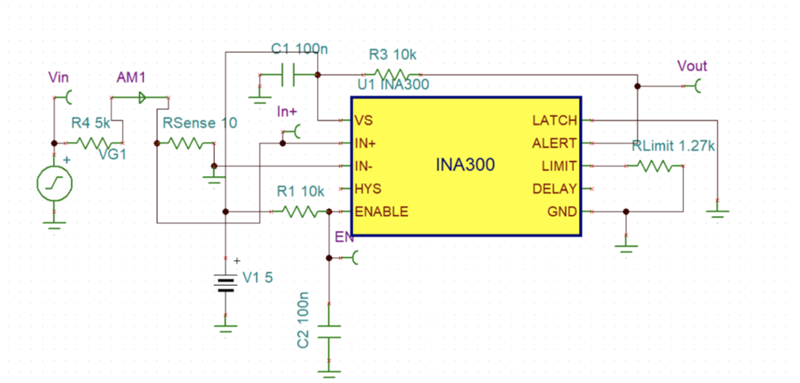Other Parts Discussed in Thread: TINA-TI
Hi,
Good day. I hope you are doing well.
Our customer is using the INA300 and they have the following inquiry. I would appreciate if you could help us with this matter.
"When I test it out, the output of the INA300 signal (pin 5) works. However, the sine wave signal is not being displayed as passing through the INA300. If the detection is working clearly, that means the signal is going through Rsense, so I was wondering why i may not be seeing it on the oscilloscope
The Tina-ti simulation works.(see attached file). Now I am testing out the actual hardware
The signal is a sine wave with frequency 5Hz, peak to peak 5V. It's being driven through resistors (1k bringing current to be 5mA which is over our threshold) and (3K bringing current to be about 1.7mA which is under our threshold). Separately driven to test both instances. Rsense is 10 ohms and Rlimit is 1.22K if you wanted to know
One other thing, when pin 2, on one end of the Rsense, is not connected to ground as shown in the schematic, the signal actually goes through but the sensing no longer works. It's a rather mind boggling problem."
Looking forward to your response.
Regards,
Cedrick

